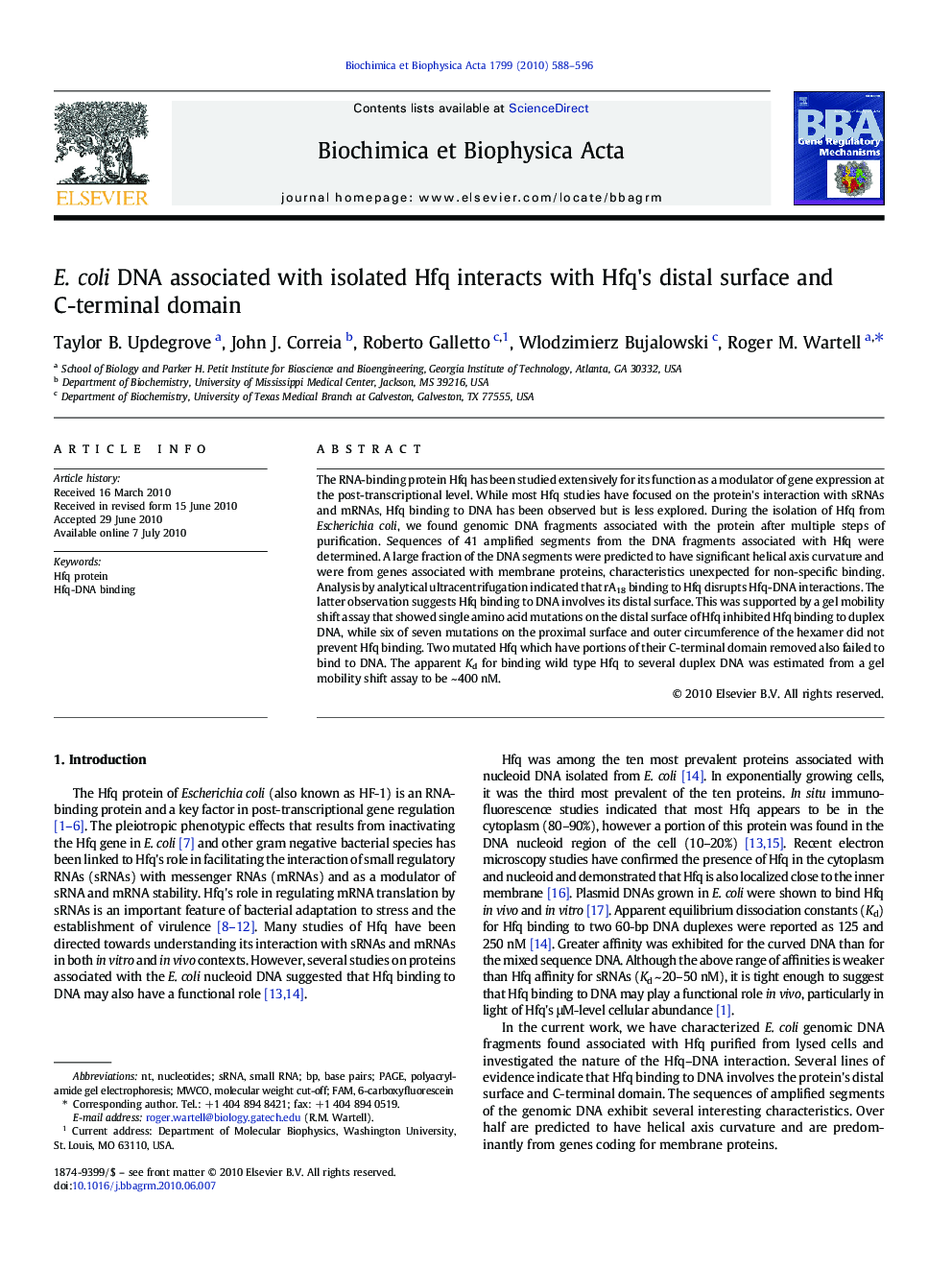| Article ID | Journal | Published Year | Pages | File Type |
|---|---|---|---|---|
| 1946821 | Biochimica et Biophysica Acta (BBA) - Gene Regulatory Mechanisms | 2010 | 9 Pages |
The RNA-binding protein Hfq has been studied extensively for its function as a modulator of gene expression at the post-transcriptional level. While most Hfq studies have focused on the protein's interaction with sRNAs and mRNAs, Hfq binding to DNA has been observed but is less explored. During the isolation of Hfq from Escherichiacoli, we found genomic DNA fragments associated with the protein after multiple steps of purification. Sequences of 41 amplified segments from the DNA fragments associated with Hfq were determined. A large fraction of the DNA segments were predicted to have significant helical axis curvature and were from genes associated with membrane proteins, characteristics unexpected for non-specific binding. Analysis by analytical ultracentrifugation indicated that rA18 binding to Hfq disrupts Hfq-DNA interactions. The latter observation suggests Hfq binding to DNA involves its distal surface. This was supported by a gel mobility shift assay that showed single amino acid mutations on the distal surface of Hfq inhibited Hfq binding to duplex DNA, while six of seven mutations on the proximal surface and outer circumference of the hexamer did not prevent Hfq binding. Two mutated Hfq which have portions of their C-terminal domain removed also failed to bind to DNA. The apparent Kd for binding wild type Hfq to several duplex DNA was estimated from a gel mobility shift assay to be ~ 400 nM.
